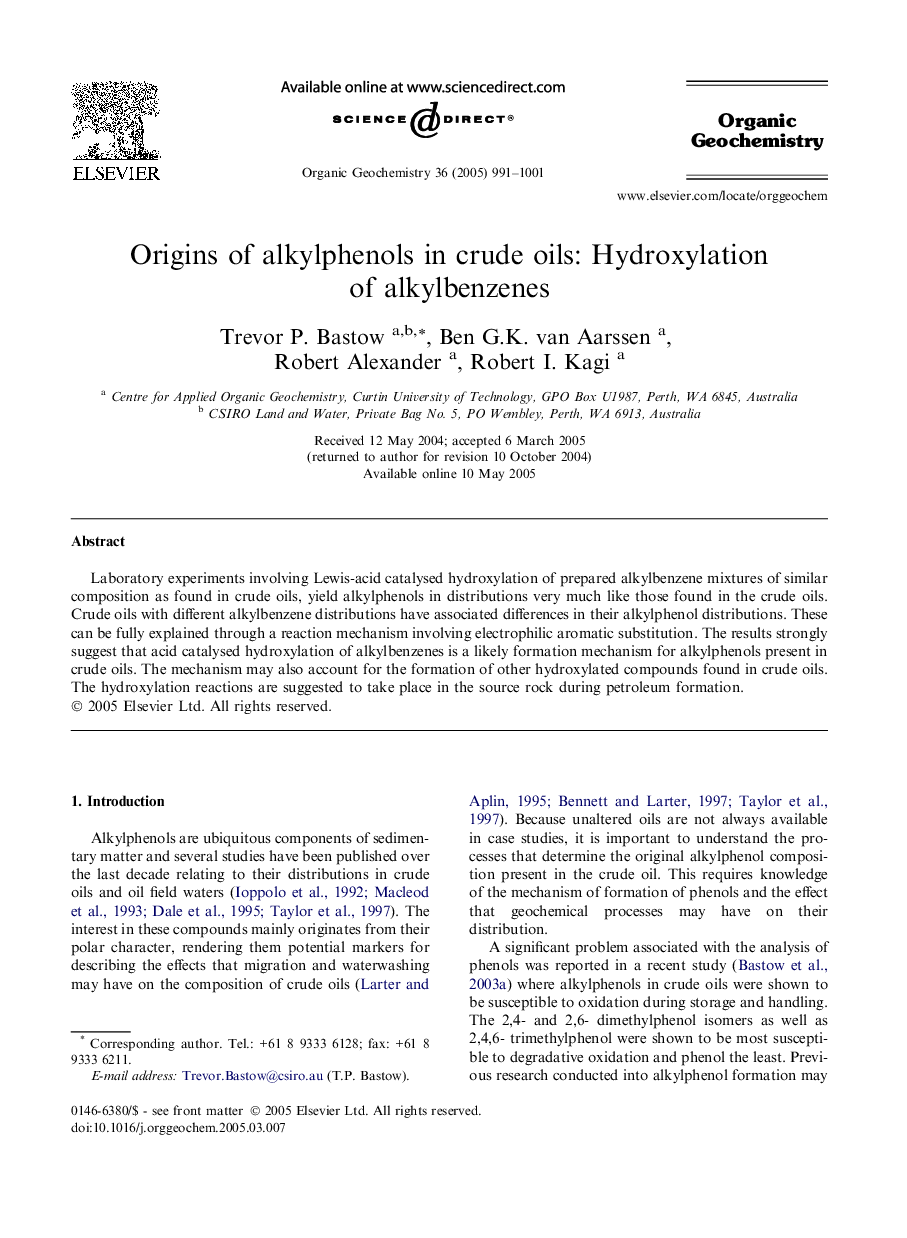| Article ID | Journal | Published Year | Pages | File Type |
|---|---|---|---|---|
| 9556790 | Organic Geochemistry | 2005 | 11 Pages |
Abstract
Laboratory experiments involving Lewis-acid catalysed hydroxylation of prepared alkylbenzene mixtures of similar composition as found in crude oils, yield alkylphenols in distributions very much like those found in the crude oils. Crude oils with different alkylbenzene distributions have associated differences in their alkylphenol distributions. These can be fully explained through a reaction mechanism involving electrophilic aromatic substitution. The results strongly suggest that acid catalysed hydroxylation of alkylbenzenes is a likely formation mechanism for alkylphenols present in crude oils. The mechanism may also account for the formation of other hydroxylated compounds found in crude oils. The hydroxylation reactions are suggested to take place in the source rock during petroleum formation.
Related Topics
Physical Sciences and Engineering
Chemistry
Organic Chemistry
Authors
Trevor P. Bastow, Ben G.K. van Aarssen, Robert Alexander, Robert I. Kagi,
